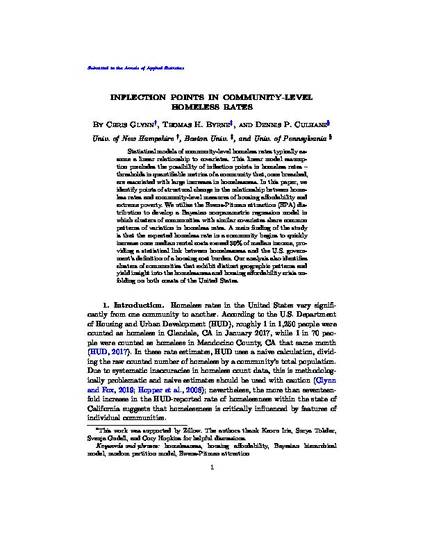
Unpublished Paper
Inflection Points in Community-level Homeless Rates
(2020)
Abstract
Previous studies that quantify the relationship between homeless rates and features of a community typically assume a global linear relationship. This linear model assumption precludes the possibility of inflection points in homeless rates - thresholds in quantifiable metrics of a community which, once breached, are associated with large increases in homelessness. In this paper, we identifying points of structural change in the relationship between homeless rates and community-level measures of housing affordability and extreme poverty. We develop a Dirichlet process mixture model that allows clusters of communities with similar features to exhibit common patterns of variation in homeless rates. A main finding of the study is that the expected homeless rate in a community increases sharply once median rental costs exceed 32% of median income, providing empirical evidence for the widely used definition of a housing cost burden at 30% of income. The Dirichlet process model also generates clusters that share common characteristics and exhibit distinct geographic patterns - yielding insight into the homelessness and housing affordability crises in large metropolitan areas on both coasts of the United States.
Keywords
- homelessness,
- housing affordability
Disciplines
Publication Date
February 28, 2020
Citation Information
Chris Glynn, Thomas H. Byrne and Dennis P Culhane. "Inflection Points in Community-level Homeless Rates" (2020) Available at: http://works.bepress.com/dennis_culhane/228/
